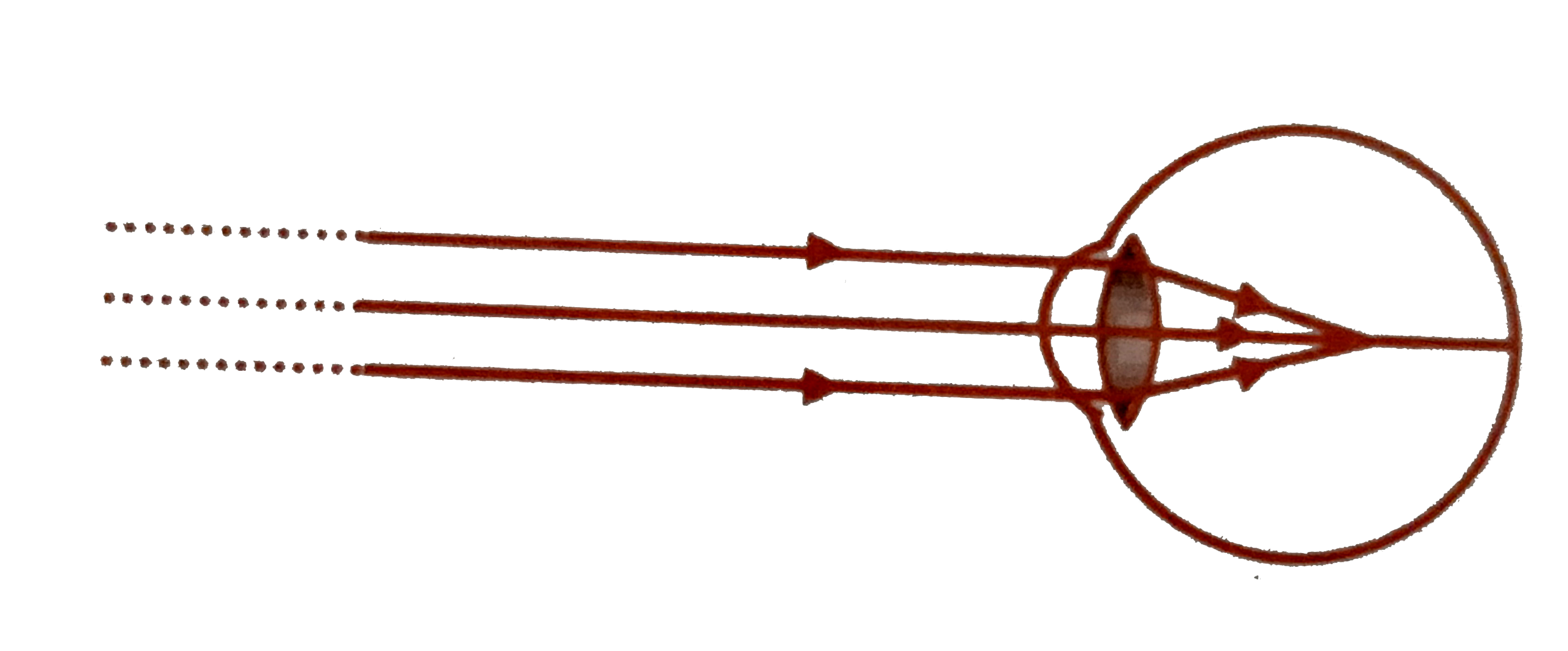What are defects of eye ? Describe them briefly.
Step-by-Step Solution:
1. Introduction to Eye Defects:
- The eye is the organ responsible for vision. Defects in the eye can impair our ability to see clearly, leading to various visual problems.
2. Myopia (Near-Sightedness):
- Myopia, commonly known as near-sightedness, is a condition where distant objects appear blurry while close objects can be seen clearly. This occurs because the image is focused in front of the retina rather than on it.
- Correction: Myopia can be corrected using concave lenses, which help to diverge light rays so that they focus correctly on the retina.
3. Hypermetropia (Far-Sightedness):
- Hypermetropia, or far-sightedness, is the opposite of myopia. In this condition, distant objects can be seen clearly, but nearby objects appear blurry. This happens because the image is focused behind the retina.
- Correction: Hypermetropia can be corrected with convex lenses, which converge light rays to ensure that the image focuses on the retina.
4. Presbyopia:
- Presbyopia is an age-related condition that affects the ability to see close objects clearly. As people age, the lens of the eye becomes less flexible, making it difficult to focus on nearby objects.
- Correction: This condition can be corrected using bifocal lenses, which contain two different optical powers. The upper part of the lens is typically convex for distance vision, while the lower part is concave for near vision.
5. Conclusion:
- The three main defects of the eye are myopia, hypermetropia, and presbyopia. Each of these conditions affects vision in different ways and can be corrected with appropriate lenses.
- The eye is the organ responsible for vision. Defects in the eye can impair our ability to see clearly, leading to various visual problems.
- Myopia, commonly known as near-sightedness, is a condition where distant objects appear blurry while close objects can be seen clearly. This occurs because the image is focused in front of the retina rather than on it.
- Correction: Myopia can be corrected using concave lenses, which help to diverge light rays so that they focus correctly on the retina.
- Hypermetropia, or far-sightedness, is the opposite of myopia. In this condition, distant objects can be seen clearly, but nearby objects appear blurry. This happens because the image is focused behind the retina.
- Correction: Hypermetropia can be corrected with convex lenses, which converge light rays to ensure that the image focuses on the retina.
- Presbyopia is an age-related condition that affects the ability to see close objects clearly. As people age, the lens of the eye becomes less flexible, making it difficult to focus on nearby objects.
- Correction: This condition can be corrected using bifocal lenses, which contain two different optical powers. The upper part of the lens is typically convex for distance vision, while the lower part is concave for near vision.
- The three main defects of the eye are myopia, hypermetropia, and presbyopia. Each of these conditions affects vision in different ways and can be corrected with appropriate lenses.
Similar Questions
What are the two types of hydrophily? Describe them briefly.
View SolutionWhat are point defects ? Describe Schottky defects in crystals.
View SolutionHow are the centres of craft production identified? Described briefly.
View SolutionWhat are the different types of coal. Describe briefly
View SolutionWhat is a cloning vector? Describe briefly the characteristics a cloning vector must possess.
View SolutionWhat are the two most common defects of vision (or defects of eye) ? How are they corrected ?
View SolutionWhat are fossils? Describe briefly two methods of determining the age of fossiols.
View SolutionBecause of refractive defects of eye, the vision becomes blurred.
View SolutionWhat are the magnetic elements of earth? Explain them briefly?
View SolutionName the defect of eye shown in the diagram.

View Solution
